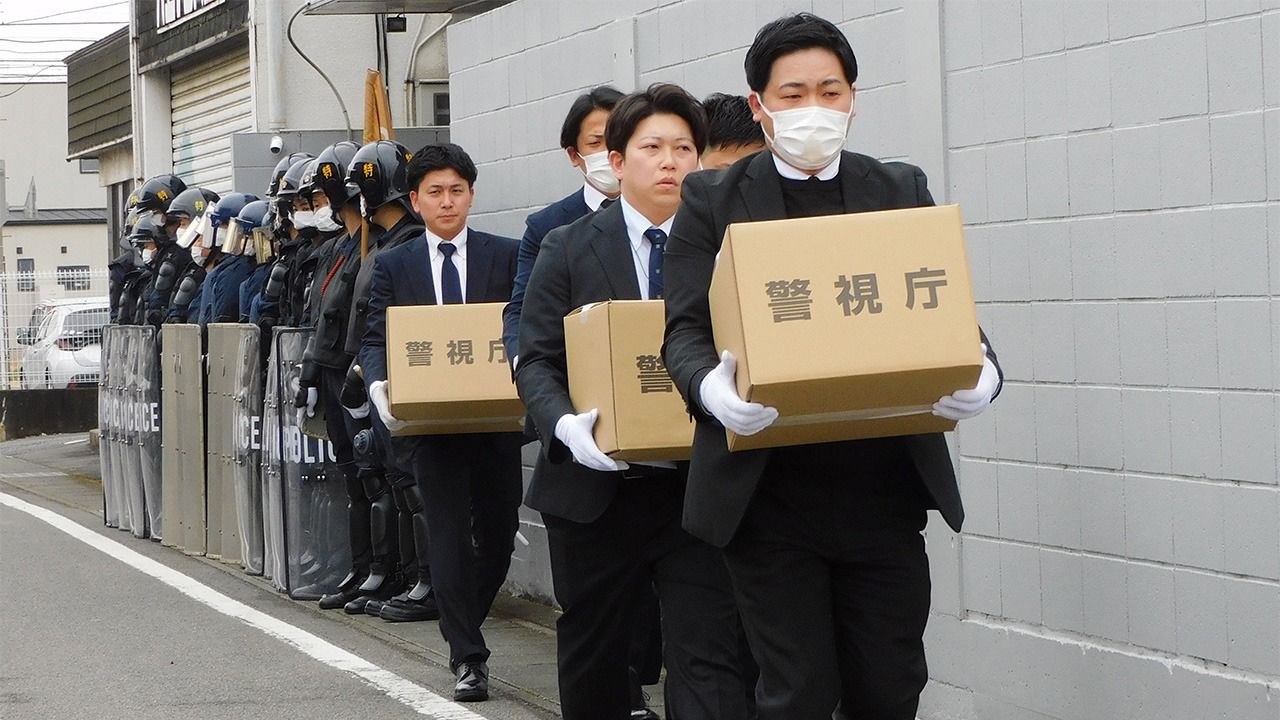
Established Organized Crime Syndicates Continue to Age and Decline in Japan
Society- English
- 日本語
- 简体字
- 繁體字
- Français
- Español
- العربية
- Русский
A National Police Agency report on organized crime in 2024 showed that the number of members and associate members of designated organized crime groups (bōryokudan) fell by 1,600 from the previous year to 18,800. This is the twentieth consecutive year that yakuza numbers have decreased and marks a new record low. Membership of syndicates dropped by 500 to 9,900, falling below 10,000 for the first time.
There were more than 80,000 organized crime gang members in Japan as of 2009, but numbers have plummeted in subsequent years. Factors in the decline include the increasing age of members and the spreading enactment of organized crime (bōryokudan) exclusion ordinances by local authorities across the country that have restricted economic and other association between gangs and ordinary citizens. The membership numbers of the main syndicates as of the end of 2024 are as follows.
2024 Membership of Major Gangs in Japan
- Yamaguchi-gumi
- Members: 3,300 (-200)
- Associate Members: 3,600 (-200)
- Kobe Yamaguchi-gumi
- Members: 120 (-20)
- Associate Members: 200 (-60)
- Kizuna-kai
- Members: 60 (unchanged)
- Associate Members: 80 (-30)
- Ikeda-gumi
- Members: 60 (unchanged)
- Associate Members: 90 (unchanged)
- Sumiyoshi-kai
- Members: 2,100 (-100)
- Associate Members: 1,100 (-200)
- Inagawa-kai
- Members: 1,600 (-100)
- Associate Members: 1,100 (-100))
Created by Nippon.com based on data from the National Police Agency. Numbers in parentheses indicate the year-on-year change.
In August 2015, the Kobe Yamaguchi-gumi splintered from the Yamaguchi-gumi, and since 2019, a turf war between the two gangs has seen a series of firearm homicides. A number of prefectural public safety commissions have also identified ongoing rivalry between the Kobe Yamaguchi-gumi, Ikeda-gumi, and Kizuna-kai, but there was only one related incident in 2024.
During 2023, the police arrested 8,249 crime gang members and associate members, in a 1,361 year-on-year decrease. The largest number of arrests, at 1,707, was for violations of the Stimulants Control Act. This was followed by 1,103 people arrested for fraud, 1,071 for assault, 713 for theft, 464 for violation of the Cannabis Control Law, and 389 for assault. There were 79 people arrested for murder, up 23 year on year.
While the power of established crime gangs is diminishing, new groups are drawing headlines for recruiting through social media or other online spaces for specialized fraud or organized robberies and thefts. These groups are known as tokuryū for their anonymous (tokumei) and fluid (ryūdō) nature, as they quickly form and disband.
In 2024, 5,203 people connected with tokuryū groups were arrested, with around half being apprehended for fraud.
(Translated from Japanese. Banner photo: Police investigators raid offices of the Inagawa-kai crime group in Ōta, Gunma, on March 4, 2025. © Jiji.)


